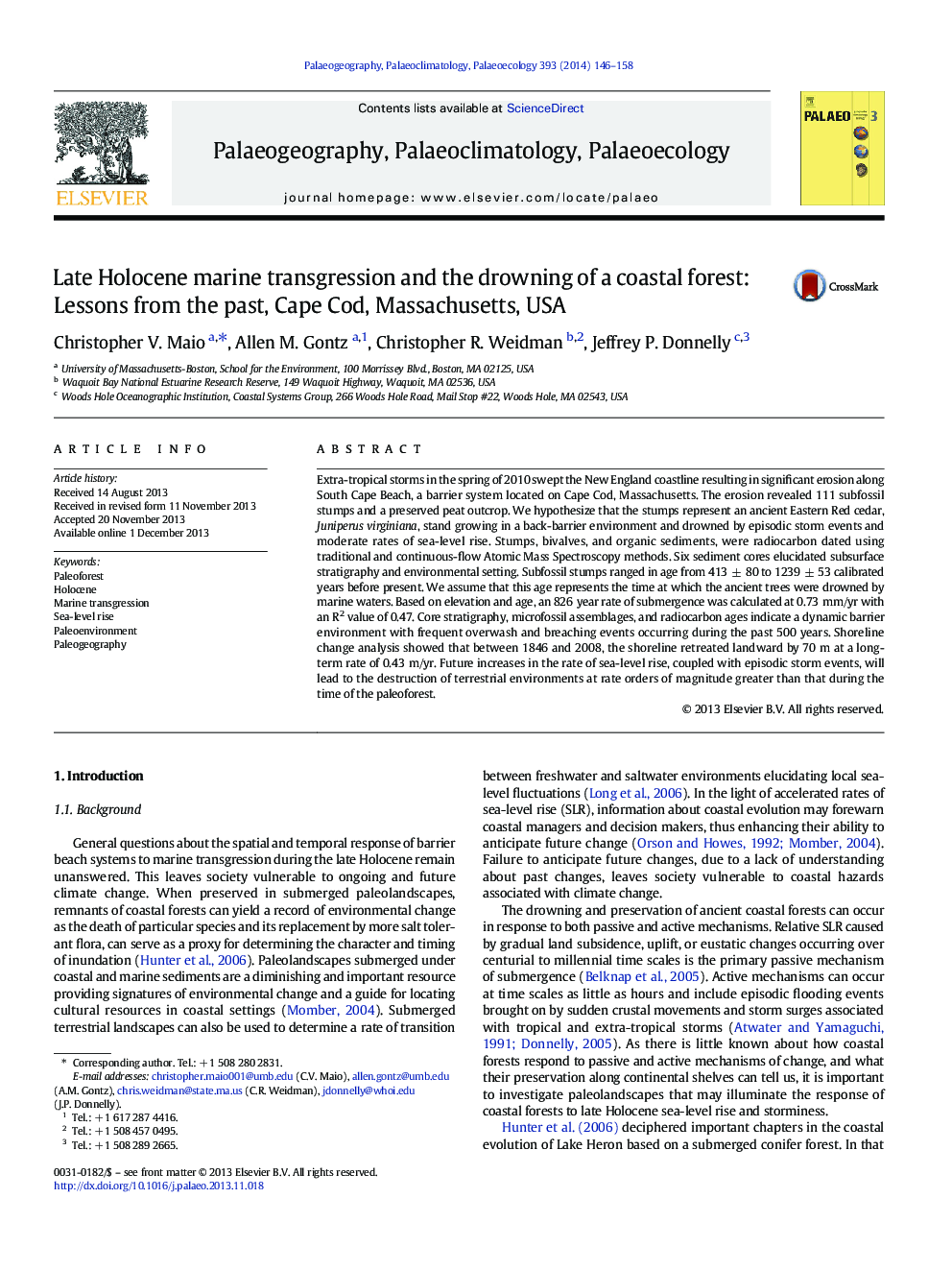| کد مقاله | کد نشریه | سال انتشار | مقاله انگلیسی | نسخه تمام متن |
|---|---|---|---|---|
| 4466483 | 1622197 | 2014 | 13 صفحه PDF | دانلود رایگان |
• When revealed along coastlines paleolandscapes can illuminate environmental change.
• A drowned paleoforest on Cape Cod, USA existed between 700-1500 AD.
• Results indicate stochastic mechanisms likely drowned the paleoforest.
• Paleoenvironmental change provides a pre-anthropogenic context for the future.
• In the future, transgression will occur more rapidly than during the late Holocene
Extra-tropical storms in the spring of 2010 swept the New England coastline resulting in significant erosion along South Cape Beach, a barrier system located on Cape Cod, Massachusetts. The erosion revealed 111 subfossil stumps and a preserved peat outcrop. We hypothesize that the stumps represent an ancient Eastern Red cedar, Juniperus virginiana, stand growing in a back-barrier environment and drowned by episodic storm events and moderate rates of sea-level rise. Stumps, bivalves, and organic sediments, were radiocarbon dated using traditional and continuous-flow Atomic Mass Spectroscopy methods. Six sediment cores elucidated subsurface stratigraphy and environmental setting. Subfossil stumps ranged in age from 413 ± 80 to 1239 ± 53 calibrated years before present. We assume that this age represents the time at which the ancient trees were drowned by marine waters. Based on elevation and age, an 826 year rate of submergence was calculated at 0.73 mm/yr with an R2 value of 0.47. Core stratigraphy, microfossil assemblages, and radiocarbon ages indicate a dynamic barrier environment with frequent overwash and breaching events occurring during the past 500 years. Shoreline change analysis showed that between 1846 and 2008, the shoreline retreated landward by 70 m at a long-term rate of 0.43 m/yr. Future increases in the rate of sea-level rise, coupled with episodic storm events, will lead to the destruction of terrestrial environments at rate orders of magnitude greater than that during the time of the paleoforest.
Figure optionsDownload high-quality image (223 K)Download as PowerPoint slide
Journal: Palaeogeography, Palaeoclimatology, Palaeoecology - Volume 393, 1 January 2014, Pages 146–158
